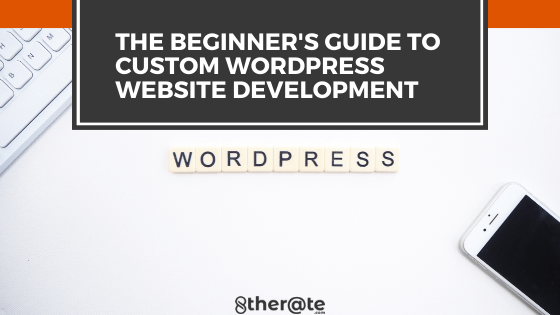Beginner’s Guide with 6 Tips to Custom WordPress Website Development

Studies of 2019 show that WordPress power 34% on the internet, in addition, over 400 million people visit WordPress sites every month. It is, without doubt, the simplest and the easiest way to develop a professional website, blogpost, or personal portfolio. Moreover, it is also free and offers more than 50000 plugins, and can be used in various languages.
Here’s what you should do in custom WordPress website development.
1. Finalize a domain name:
In simple terms, the domain name is your enterprise name or product name. It should be really powerful, therefore do not be hasty while choosing a domain name. There are hundreds and thousands of online tools available that will save you from getting cold feet while finding a domain name for your business and if you are confused then you can get the help of a custom WordPress development services provider as well.
If you are developing a website for your enterprise is pretty obvious that you will your enterprise name as the domain name. There are a variety of extensions you can select, note that.COM is a popular one, and most internet users type.COM in the address bar by default. Nevertheless, if you come to know that your desired domain name is unavailable under.COM extension, try using.ME.CO, or .NET which are also very famous.
2. Install WordPress:
Before we talk about the installation, we would like to draw your attention to the difference between wordpress.org and wordpress.com since they have regularly confused, and are used interchangeably.
WordPress.org is the place where you must go to install WordPress, for this guide. It is where you will get the free version of the WordPress software. On the contrary to being free, you will have to host the website via a third-party hosting service.
WordPress.com provides more services and options, and is, hence, a paid subscription.
Once you have successfully logged in to your hosting account, click on my account tab and log in to your cPanel. Here, click on the WordPress icon in the auto-installers area and follow the steps to install WordPress. Then, enter your username and password which you will use to log into your website with some other information. Later, click the finish installation button and wait for WordPress to be installed.
3. Analyze the WordPress Dashboard and its interface:
There is a total of 9 sections in the WordPress dashboard. They are:
- Settings
- Tools
- Users
- Plugins
- Appearance
- Comments
- Pages
- Media
- Posts
Each section has its own importance and significance. Scroll through all of them and their sub-section and analyze every single corner of the dashboard. Because of the user-friendly nature of the WordPress dashboard, even a non-technical user can easily scroll through it without much assistance.
4. Install WordPress theme:
Here are the steps to install a WordPress theme to your project:
In the Appearance section of your WordPress dashboard, click on the themes option.
Here, click on the Add New button. You will be displayed with several templates, where you can filter them by the latest, featured, popularity, or by features.
Once you have chosen a theme, click on install, and then activate buttons.
You can activate your WordPress theme if you click on appearance -> themes.
5. Develop your WordPress website:
In WordPress, your site design is completely dependent on your chosen theme. If you have to add something extra, you may want to find something to bridge the gap of missing features. WordPress website builders help users in taking the WordPress Customizer to another level. You can personalize everything like header, page content, footers, navigation menus, global, etc. No design or coding is required.
6. Install all the required WordPress plugins:
The WordPress ecosystem is made of plugins and themes. There are hundreds and thousands of WordPress plugins available that can enhance the functionality or add new features to your website. Here are some of the important plugins you will definitely need in your website:
- Colibri
- Yoast SEO
- Forminator
- WooCommerce
- FileBird
- Google Analytics
Conclusion
According to us, that’s a wrap. With this document, we chose to shortest way possible and not to overwhelm our readers with tons of information. In the end, the truth lies in the details, you just gave you the birds’ view. An important thing is that you can have your website running in less than 2 hours. But the more the features, content, pages, the longer it will take. Also, do not ever neglect the latest web design trends.
If you do not feel like developing a WordPress all by yourself, you can also take help from professionals like 8therate. They are India’s-fastest growing Custom Web Development Company offering world-class Custom WordPress Development Services to its customers. The enterprise has a team of highly trained experts who will build highly intuitive and user-friendly websites for their clients.







